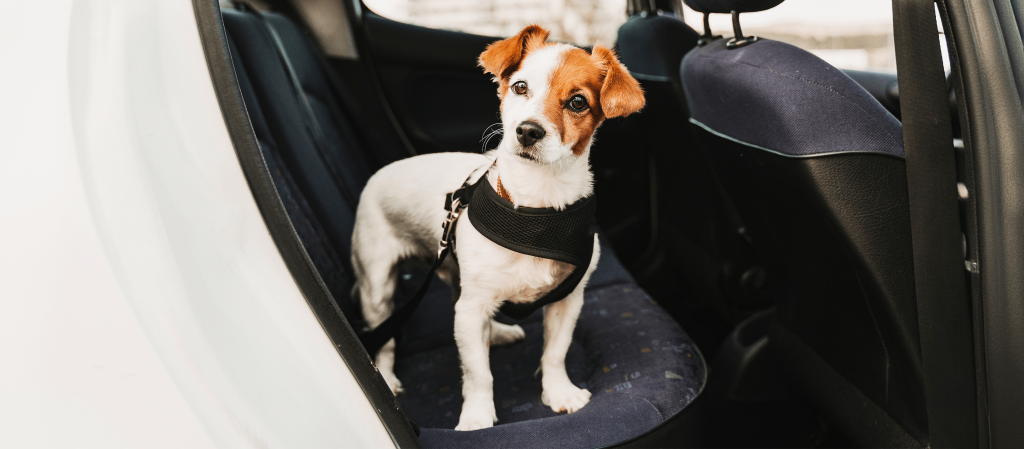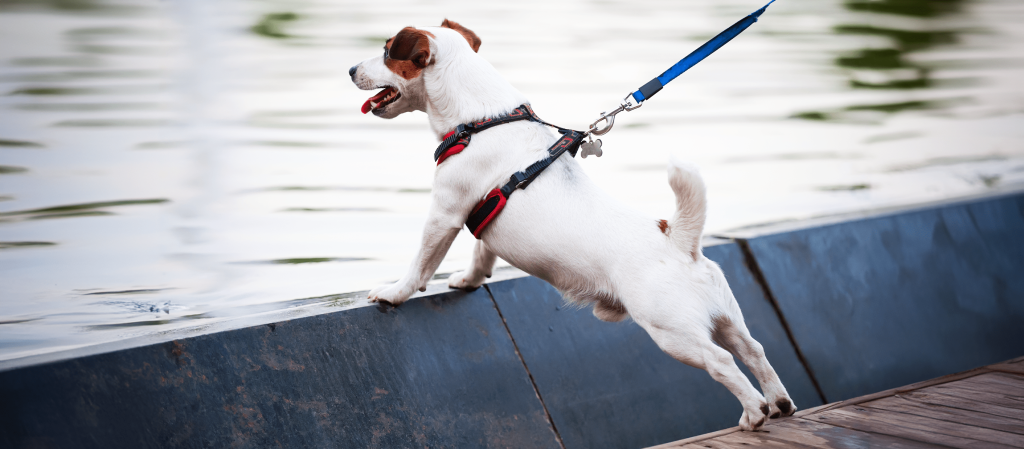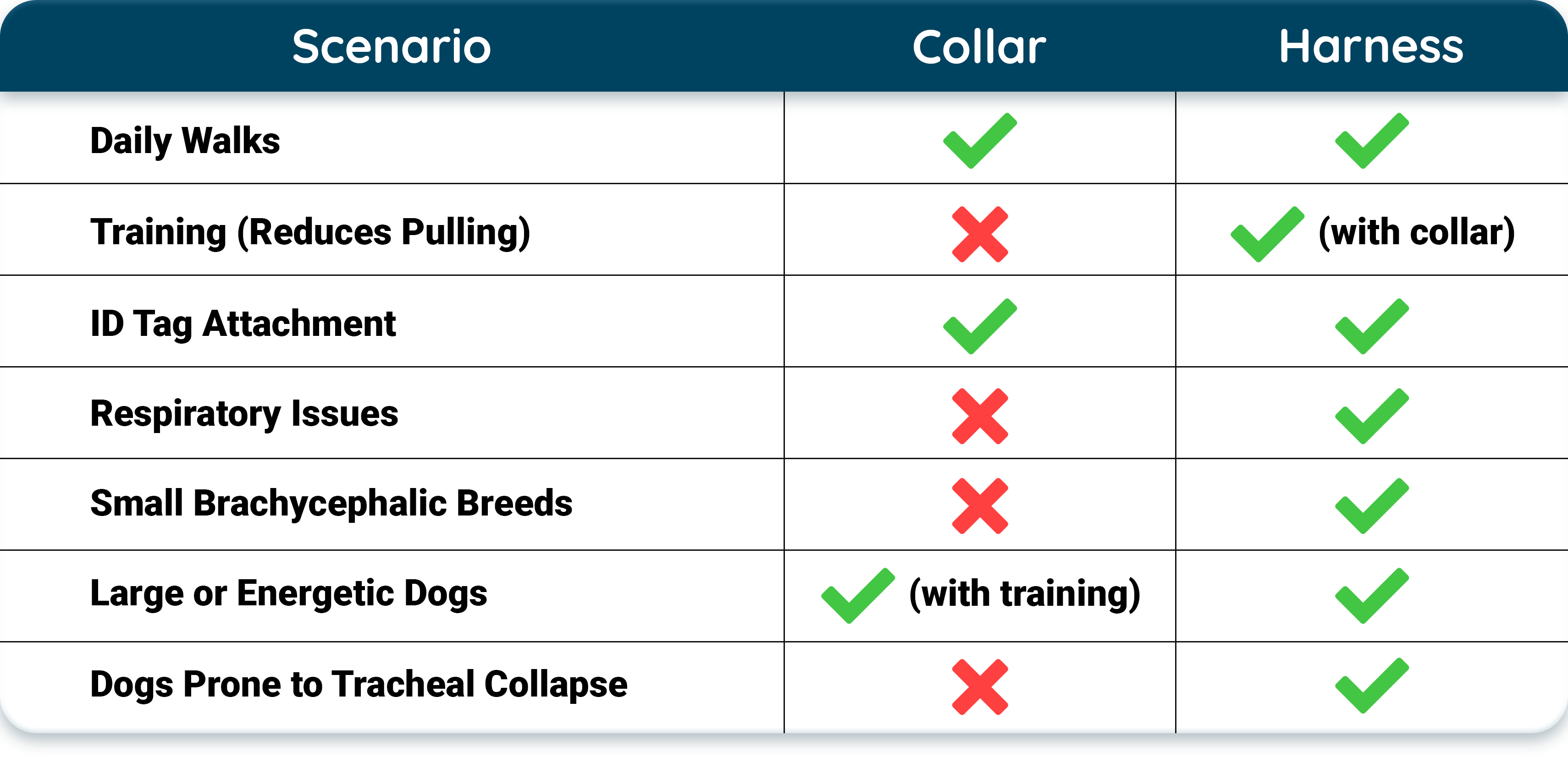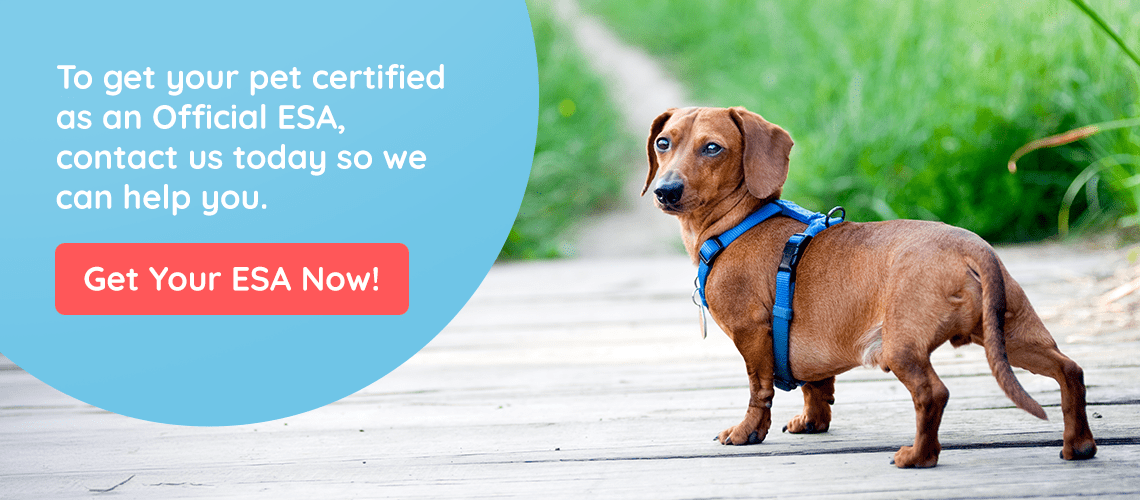When it comes to walking your dog, choosing between a collar and a harness can be challenging. Both options offer distinct advantages depending on your dog’s needs. In this guide, we’ll delve into the differences between dog collars and harnesses to help you make the best choice for your furry friend
Types of Dog Collars
Dog collars are essential accessories for most dogs, but they come in various styles and designs, each with unique features. Understanding the different types of collars can help you choose the right one for your dog’s needs and lifestyle.
Flat Collars
Flat collars are the most common type of dog collar. They are simple, versatile, and suitable for many different types of dogs. Flat collars are ideal for everyday wear and can hold ID tags for safety.
Martingale Collars
Martingale collars are designed to prevent dogs from slipping out of their collar. They tighten slightly when the dog pulls but are safer and more comfortable than choke collars. This type of collar is particularly useful for breed dogs that tend to escape.
ID Tag Collars
ID tag collars are crucial for keeping your dog safe. They have a special spot where you can attach ID tags. If they ever get lost, these tags help you find your dog. ID tag collars are practical and necessary for every dog owner.
Curious about whether your furry friend can qualify as an ESA? Unlock the possibilities with our quick quiz! Discover your pet’s potential now!
Potential Pros of Dog Collars
Dog collars offer several benefits, making them a popular choice for many pet owners. Understanding these advantages can help you decide if a collar is the best option for your dog.
Easy to Use
Collars are straightforward to put on and take off, making them convenient for daily use. They are especially useful for dogs that do not require special handling or have no significant respiratory issues.
Control
For dogs that are well-behaved and do not pull excessively, collars offer sufficient control. They are effective for keeping your dog close during walks, especially if the dog pulls moderately.
ID Tags
Collars are an excellent option for attaching ID tags. These tags are essential for your dog’s safety, allowing others to contact you if your dog gets lost.
Training
Collars can also be used for training purposes, especially for dogs that do not have behavioral issues or strong pulling tendencies.
Is your pet ready for ESA benefits? Dive in and explore with our quick quiz! Check it out here!
Tips for Buying a Dog Collar
Choosing the right collar involves more than just picking a design you like. Here are some important factors to consider to ensure you select a collar that is both functional and comfortable for your dog.
Size
Getting the correct size is crucial for your dog’s comfort and safety. Measure your dog’s neck carefully and choose a collar that fits snugly but not too tightly. A well-fitting collar ensures that it stays in place and doesn’t cause discomfort.
Material
Collars come in various materials, including nylon and leather. Select a material that suits your dog’s lifestyle and specific needs, such as durability for active dogs or softness for dogs with sensitive skin.
Safety
A collar should have a quick-release buckle to ensure your dog can be freed easily in case of an emergency. This feature is vital for your dog’s safety, particularly if they have medical conditions.
Think your pet could benefit from ESA status? Find out in seconds with our straightforward quiz! Start the quiz here.
Types of Dog Harnesses
Harnesses are an alternative to collars and come in different styles, each with its own set of features. Understanding these types can help you choose the best harness for your dog’s needs.
Back-Clip Harness
A back-clip harness has the leash attachment on the dog’s back. This type is often suitable for small or calm dogs, providing a comfortable and simple solution. It’s a good choice for working dogs or those that don’t pull aggressively.
Front-Clip Harness
The front-clip harness has the leash attachment on the dog’s chest. This design is beneficial for reducing pulling and helps with training. It is particularly useful for dogs that tend to pull hard on the leash.
Step-In Harness
Step-in harnesses are easy to put on because your dog simply steps into the harness. They are secured with a clip, making them a convenient option for many pet owners. This style is often favored for brachycephalic breeds because of its comfort.
Wondering if your pet could qualify for ESA? Uncover the answer with our easy quiz! Get started now!
Potential Pros of Dog Harnesses
Harnesses offer various advantages, particularly for dogs with specific needs or behavioral issues. Here’s why you might consider using a harness instead of a collar.
Reduces Pulling
Front-clip harnesses are designed to help train dogs not to pull. This can make walks more enjoyable and less stressful for both you and your dog. Harnesses that reduce pulling are beneficial for dogs that tend to pull strongly on the leash.
Safety
Harnesses distribute pressure more evenly across your dog’s body, which can prevent injuries like tracheal collapse. This makes them a safer option for dogs with airway issues or sensitive necks.
Control
Harnesses provide more control over large or energetic dogs, making them a good choice for managing powerful breeds or those with strong pulling tendencies.
Comfort
Harnesses are often more comfortable for dogs, particularly those with medical conditions. They help avoid putting pressure on sensitive areas like the neck and throat, making them a preferred choice for dogs with existing health concerns.
Is your dog a perfect match for ESA support? Discover the details with our engaging quiz! Find out here!
Tips for Buying a Dog Harness
Selecting the right harness requires careful consideration to ensure it is suitable for your dog’s size and needs. Here are some tips to help you choose the best harness.
Fit
A harness should fit well around your dog’s chest, shoulders, and upper body. Proper fit ensures comfort and effectiveness in controlling your dog. A good harness should not chafe or restrict movement.
Material
Choose a harness made from durable, breathable materials that will hold up well and keep your dog comfortable during walks. The material should be suitable for your dog’s activity level and weather conditions.
Adjustable Straps
Look for a harness with adjustable straps to achieve a perfect fit. This feature allows you to customize the harness to your dog’s specific measurements, ensuring that it remains secure and comfortable.
Is your dog ready for ESA benefits? Unlock the potential with our straightforward quiz! Click here to get started.
Collars vs. Harnesses: The Pros and Cons
Choosing between a collar and a harness involves weighing the pros and cons of each option. Understanding these aspects will help you make an informed decision based on your dog’s needs.
Dog Collars
Pros:
- Easy to use
- Holds ID tags
- Suitable for training
- Good for dogs that don’t pull
Cons:
- Can cause injuries like tracheal collapse
- Less control over pulling dogs
- Not suitable for dogs with breathing issues
Dog Harnesses
Pros:
- Reduces pulling
- Distributes pressure evenly
- More control
- Comfortable for dogs with medical conditions
Cons:
- Can be harder to put on
- Some dogs may not like wearing them
- May encourage pulling if not used correct
Curious about ESA benefits for your dog? Take our fun and quick quiz to explore your options! Click here to find out!
What Should I Wear?
Here’s a handy table to help you decide whether a collar or harness is best for your dog based on different scenarios:
In conclusion, both collars and harnesses have their place in your dog’s life. Choosing the right one depends on your dog’s needs, health, and behavior. Remember to prioritize your dog’s comfort and safety when making your decision. Happy walking!










